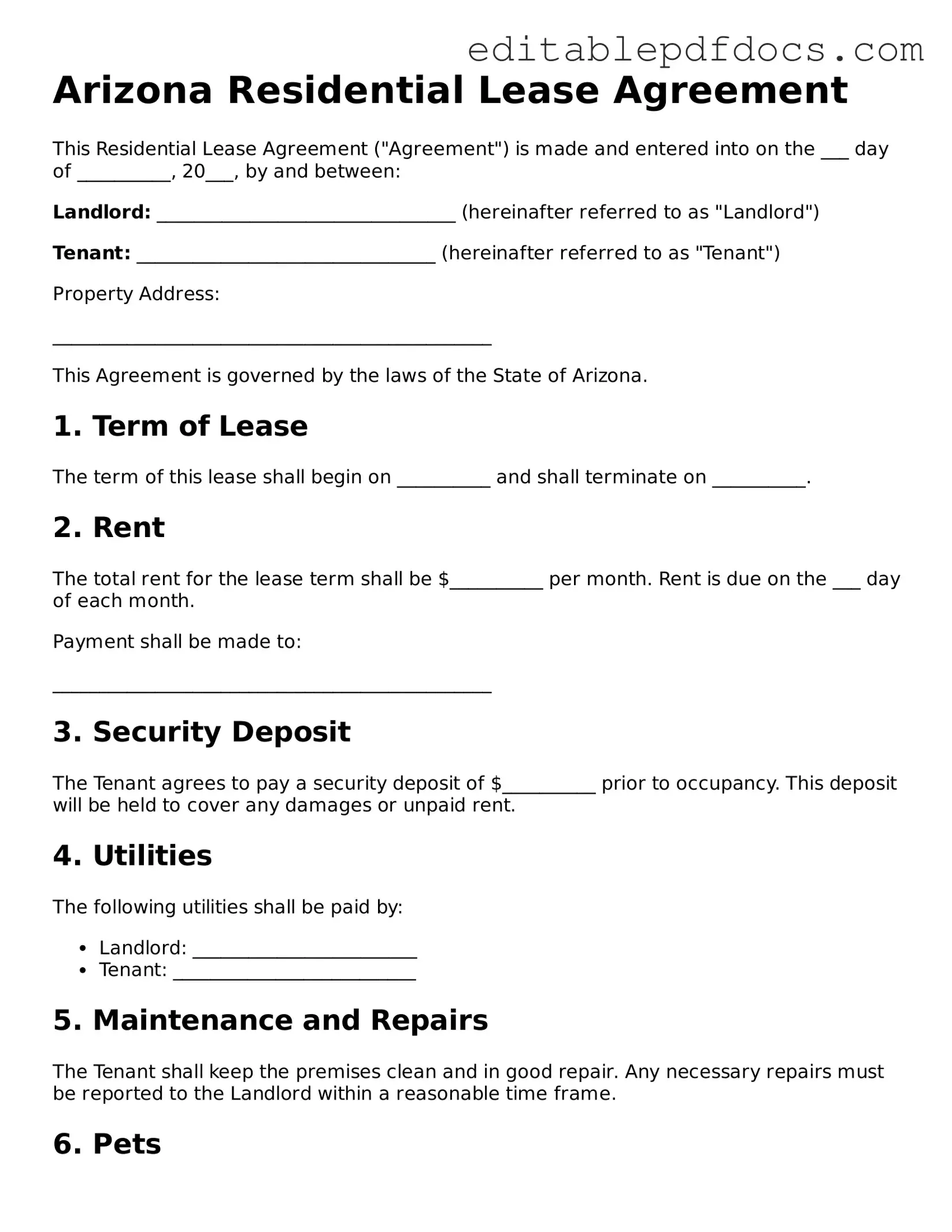Filling out the Arizona Residential Lease Agreement form can be a straightforward process, but there are common mistakes that many people make. One frequent error is failing to include all required tenant information. Each tenant's full name, contact details, and identification should be clearly stated. Omitting any of this information can lead to confusion or disputes later on.
Another common mistake is not specifying the lease term. The agreement should clearly outline the start and end dates of the lease. If these dates are left blank or incorrectly filled in, it can create uncertainty regarding the duration of the tenancy, which may lead to complications down the line.
Many individuals also overlook the importance of detailing the rental amount and payment terms. It's essential to state the monthly rent clearly, including any additional fees or deposits. Without this information, misunderstandings about payment expectations can arise, potentially leading to financial disputes.
Additionally, some people forget to include the method of payment. Whether rent will be paid by check, bank transfer, or another method should be explicitly stated. This ensures that both parties are on the same page and helps avoid payment issues.
Another mistake involves neglecting to address maintenance responsibilities. The lease should specify who is responsible for repairs and maintenance, whether it’s the landlord or the tenant. Failing to clarify these responsibilities can lead to frustration and disagreements if issues arise.
Many individuals also fail to read the entire lease agreement before signing. It's crucial to understand all terms and conditions outlined in the document. Signing without comprehension can lead to unintended obligations or rights being waived.
Moreover, people often forget to include any specific rules or restrictions related to the property. If there are policies regarding pets, smoking, or alterations to the property, these should be clearly articulated in the lease. Not doing so can lead to conflicts after the lease is signed.
Lastly, some individuals do not keep a copy of the signed lease agreement. It’s important for both the landlord and tenant to retain a copy for their records. This ensures that both parties have access to the same information should any questions or disputes arise in the future.
